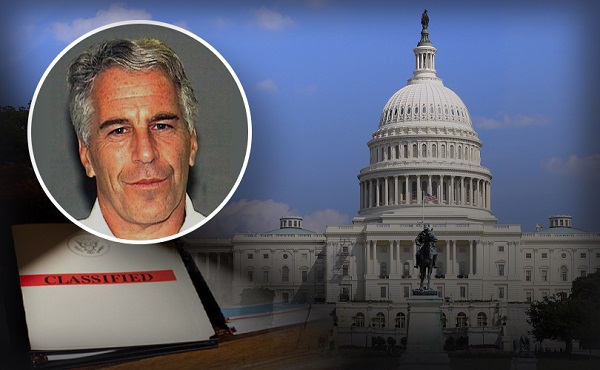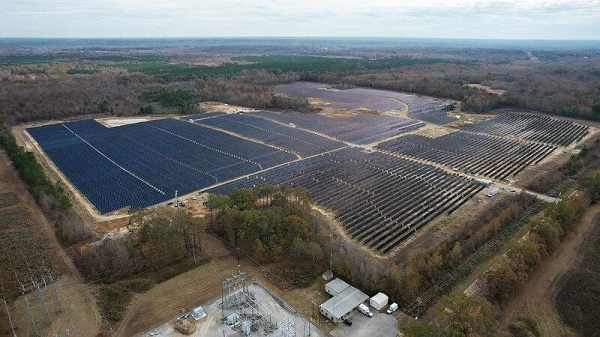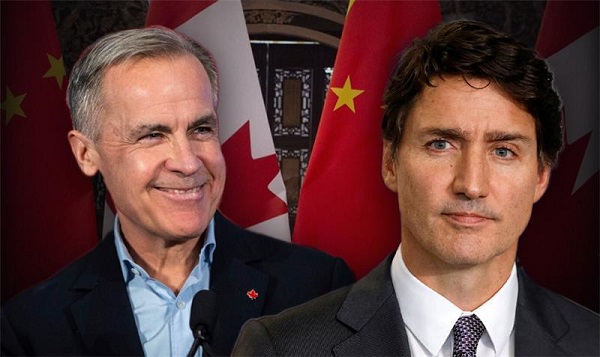Alberta
Most Alberta municipalities spending more—but some far more than others

From the Fraser Institute
By Tegan Hill and Austin Thompson
In Alberta, municipal government spending is on the rise—and not just because of higher prices or a growing population. Indeed, most of Alberta’s largest municipal governments have increased spending in recent years (even after adjusting for inflation and population growth). That means higher taxes for many Albertans. But depending on where you live, you might be paying much more than your neighbours.
From 2009 to 2023 (the latest year of available data), per-person spending across Alberta’s largest municipalities increased by 12.9 per cent (on average), climbing from $3,001 to $3,389 (inflation-adjusted).
Some governments have increased spending more sharply than others. For example, during that same 15-year period, local governments in Canmore, Grande Prairie County and Strathcona County all increased their per-person spending by more than 20 per cent to reach more than $4,000 per person. And Lethbridge, the province’s fourth-most populous city, increased per-person spending by 18.6 per cent to reach $4,423. (Again, all numbers adjusted for inflation.)
But not all municipalities share this approach to spending. Alberta’s two largest cities, Calgary (2.1 per cent) and Edmonton (4.8 per cent) saw relatively modest spending increases from 2009 to 2023. As a result, their 2023 per-person spending levels ($3,144 and $3,241, respectively) were around the middle of the pack.
Airdrie, Chestermere and Cochrane—all fast-growing communities near Calgary—each spent under $2,200 per person in 2023. And all three reduced their per-person spending. (after adjusting for inflation).
Of course, no two municipalities are exactly alike. They all make different policy choices about which services to fund and how to fund them. But the sheer size of these differences across Alberta—and the overall upward trend in spending—should grab the attention of Albertans.
Local governments have an enormous impact on the day-to-day lives of Albertans. They build local water infrastructure, maintain local roads, manage local parks and set municipal property tax rates. And yet, their budgets often receive far less public scrutiny than their provincial or federal counterparts.
Moreover, when municipal spending grows faster than population and inflation, year after year, it raises important questions about value, sustainability, and accountability. Albertans in high-spending municipalities are right to ask: has additional spending translated into better services? Or are costs rising without clear public benefit?
Municipalities need resources to function well—but they also should use those resources wisely. Albertans should pay attention to what their local government representatives spend—and how spending levels compare across the province—to help assess whether they’re getting good value for their tax dollars.


Austin Thompson
Alberta
Change at the top: Rob Morgan is the new CEO of the Alberta Energy Regulator

Rob Morgan, CEO of the Alberta Energy Regulator. Photo courtesy AER
From the Canadian Energy Centre
By Will Gibson
Restructured AER aims a return to its technical roots
Rob Morgan’s introduction to the energy business was a summer job in the Lloydminster region in 1985, when the University of Saskatchewan chemical engineering student got up close and messy with heavy oil production at the wellhead.
“My work boots got very dirty very quickly. That’s the joke about working in heavy oil around Lloydminster. Once it’s on your boots, it never comes off,” says Morgan, a Saskatoon native.
“Working in the field was great because you were hands on with absolutely everything. It was just a fabulous experience.”
Oil stains on his steel-toed boots were not the only thing that stuck with Morgan, who spent the next four decades working in industry before being named CEO of the Alberta Energy Regulator (AER) in February 2025.
Morgan wants to apply some of his hard-earned industry wisdom at the regulator following a 2024 review of the organization by a panel appointed by Premier Danielle Smith.
The panel found a need to return the regulator to its original purpose: resource conservation; orderly but continued economic growth; protection of people, communities, assets and the environment; and regulatory independence.
Returning the regulator to a form closer to its legacy roots will improve Alberta’s reputation as a stable, predictable, internationally competitive and rewarding destination for investment capital, the panel said in its final report.
“The whole world has changed since 2020,” says David Yager, an industry veteran and special advisor to the Premier who chaired the review panel.
New areas of focus including carbon capture and storage (CCS), emerging resources like lithium, and new opportunities like data centres require a modernized approach, Yager says.
“The question was whether or not the regulator was well suited for where the current government wants to take Alberta, and the answer is no, it wasn’t. But that’s changed,” he says.
“The conclusion everybody involved in the review came to is the AER is an independent regulator that needed more direct industry participation, so here we are.”
Prior to taking on the top job at the AER, Morgan retired as CEO of Strathcona Resources, a growing oil and gas producer in Alberta and Saskatchewan.
Along with hiring Morgan, the AER has brought on a reconstituted board of directors as part of implementing the panel’s recommendations.
Chairing the revamped board is Duncan Au, former CEO of CWC Energy Services, a contract drilling and well servicing company operating in Canada and the U.S. that was acquired by Precision Drilling in November 2023.
Just months into their new jobs, Au and Morgan wrote in the AER’s annual report about their new appreciation for the complexity of weighing the various elements of the regulator’s mandate.
“The narrative around energy development has taken on a new sense of urgency not only with a discussion of finding new markets and customers, but also how to grow and diversify Alberta’s role in those markets,” they wrote.
“From oil and gas to emerging opportunities in critical minerals, hydrogen, geothermal, and helium, the AER will be tasked to find the appropriate path among many competing priorities and perspectives.”
Through technological innovation, industry has already reduced environmental impacts, improved worker safety, and boosted economic returns, they wrote.
“It is clear we can continue to modernize our regulations and practices to keep pace with the next wave of technological development and carry out our core regulatory role: translating government legislation into practical regulation that safeguards the environment while ensuring Albertans continue to benefit from the wealth of resources in our province.”
Alberta
Poilievre easily wins Alberta by-election, will return to Parliament this fall

From LifeSiteNews
Conservative Party leader Pierre Poilievre won the Battle River-Crowfoot by-election in Alberta with 80.4% of the vote, securing his return to Parliament.
Conservative Party leader Pierre Poilievre has won the Alberta by-election, securing his seat in Parliament this fall.
According to August 18 results from Elections Canada, Poilievre has won the Alberta federal riding of Battle River-Crowfoot by-election with 80.4%, or 40,548 votes, which will allow him to stay on as party leader and return to Parliament.
“Getting to know the people in this region has been the privilege of my life,” Poilievre told a crowd at a victory party in Camrose, Alta. “In fact, I’ve had a hell of a lot of fun.”
During the April election, Poilievre lost his Ottawa seat to his Liberal rival, a seat he had held for decades. As a result, he did not return to Parliament but chose to remain as party leader. Conservative MP Andrew Scheer has been acting as party leader in his absence.
Shortly after, Conservative MP Damien Kurek officially resigned as an MP in Battle River-Crowfoot riding in a move to allow Poilievre to run in the by-election.
The Battle River—Crowfoot riding covers over 52,000 square kilometers of east-central Alberta and is considered one of the safest Conservative strongholds in Canada.
During the by-election, a group called the “Longest Ballot Committee” helped register protest candidates against Poilievre, just as they did in his former Ottawa-area Carleton riding in April’s election. The tactic was meant to confuse voters and reduce the number of people who voted for Poilievre.
Poilievre’s return follows months of speculation that he might lose the by-election and Conservatives would elect a new leader.
The Conservative leader is known for waiting to make strong statements until after the public reacts. In fact, in February, Poilievre muzzled his own MPs from speaking about Alberta’s ban on “transitioning” kids, only to come out days later in favor of the move after public support for Alberta’s policy rolled in.
Despite his statements in favor of the pro-family movement’s opposition to puberty blockers, he has refrained from pledging any action if he were elected prime minister, choosing instead to insist that such matters are best left under provincial jurisdiction.
-

 International2 days ago
International2 days agoTrump DOJ to share Epstein documents with House Oversight Committee this week
-

 Alberta2 days ago
Alberta2 days agoPoilievre easily wins Alberta by-election, will return to Parliament this fall
-

 Agriculture2 days ago
Agriculture2 days agoLab-made food won’t win over Canadian shoppers
-

 Opinion2 days ago
Opinion2 days agoWhen collective and individual rights clash, media must focus on holding the powerful accountable
-

 Energy1 day ago
Energy1 day agoUSDA reverses use of taxpayer dollars to fund solar panels on farmland
-

 International2 days ago
International2 days agoTrump says he’s spoken to China’s Xi Jinping about imprisoned businessman Jimmy Lai
-

 armed forces2 days ago
armed forces2 days agoPoilievre vows to rebuild Canada’s military, replace ‘woke culture’ with ‘warrior culture’
-

 Energy1 day ago
Energy1 day agoHow Trump Can End Europe’s Reign Of Terror On American Oil And Gas








